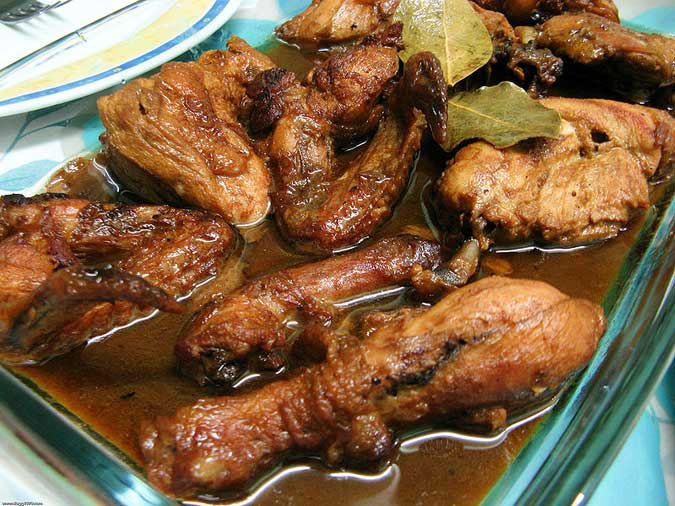The Department of Trade and Industry (DTI) is developing national standards for Filipino dishes like adobo to establish a “common ground” among businesses.
A committee under the department has been tasked with developing Philippine National Standards (PNS) for popular dishes such as adobo, sinigang, lechon, and sisig, while considering the variation of cooking techniques across the country, the DTI said in a statement on Friday. The project starts with adobo.
Noting the wide variety in the ingredients and cooking methods used for adobo, the DTI said that the standard will set the common elements defining the “basic” Philippine adobo.
“There will be different approaches and opinions (on cooking Philippine adobo). As long as I have, say one to three steps, it’s this recipe. Anything else you add to it is a variation to the cooking technique,” chef Myrna Segismundo of the Food Writers Association of the Philippines said.
Ms. Segismundo is part of the committee developing the standards, along with representatives from restaurant and food industry groups, the Department of Science and Technology, and the National Commission for Culture and Arts.
The DTI Bureau of Philippine Standards Director Neil P. Catajay said that developing Filipino dish standards will create a “distinguished Filipino food culture while establishing the common ground for food businesses.”
“Standardizing the basic cooking technique for Philippine adobo will help ordinary citizens, foodies, and food businesses determine and maintain the authentic Filipino adobo taste,” he said.
The draft of the standards will be circulated nationwide for review from stakeholders.
Aside from Ms. Segismundo, the other members of the recipe committee (Bureau of Philippine Standards Technical Committee on Filipino Dishes or BPS/TC 92) are the committee chairperson chef Glenda Barretto of Via Mare, chef Raoul Roberto Goco from the Hotel and Restaurant Association of the Philippines, representatives from the University of the Philippines Diliman – College of Home Economics, Philippine Chamber of Food Manufacturers, Inc., Philippine Association of Meat Processors, Inc., Department of Science and Technology – Industrial Technology Development Institute, Philippine Association of Food Technologists, Inc., LTB Chefs Association, Asia Society Philippines, the National Commission for Culture and the Arts, and the Philippine Daily Inquirer which has had a long-running column on adobo recipes in its lifestyle pages.
The committee off the project on May 11 by starting the development of a PNS for adobo, using the cookbook Kulinarya: A Guidebook to Philippine Cuisine as their main reference.
“Adobo is not a recipe. It is a cooking technique,” Mr. Goco was quoted as saying in the DTI release, which also noted that there are a great number of adobo recipes around the country “ranging from those with laurel, pepper, soy sauce, vinegar, coconut cream/milk, atsuete, and other ingredients cooked through various methods such as braising and stewing, among others.”
“Benchmarking the cooking technique for Philippine adobo will help preserve the country’s cultural identity despite the variations made to it,” says the release.
Philippine National Standards are product characteristics and production guidelines, but compliance is not mandatory. — Jenina Ibañez

